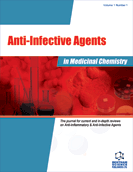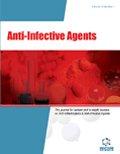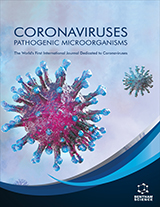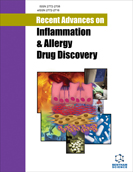Abstract
The aim of this study was to investigate the efficacy different of throat antiseptics on the oropharynx in healthy volunteers. A newly developed standardised test method was established. Using 12 volunteers per product to be tested, the reduction in the total colony count was the primary endpoint, and reduction in viridans Streptococci was the secondary endpoint criterion, for the commercial antiseptics neo-angin® N throat lozenges, neo-angin® N sugar-free lozenges, neoangin ® N throat and mouth spray, Sorot® lozenges, and Hexoral® mouth wash. At baseline, immediately, 2 and 5 hours after application two areas of the oral mucosa in the lower jaw at the level of the second molars and from the uvular region were swabbed and investigated for total bacterial counts. Following neutralisation, the swabs were inoculated onto blood agar. The antiseptic effect was more prominent in the throat, the area targeted by the antiseptic, than in the cheek mucosa. The reduction in total colony count was significant both with the test preparations and with the comparison preparations; A reduction of > 1 log was achieved for both endpoint criteria immediately after application of antiseptic and continued at this level for 30 minutes. Even after 5 hours, a significant reduction in total colony count was observable. Furthermore the established test model allowed determining the antiseptic efficacy of lozenges or spraying preparations in comparison to rinsing solutions.
Keywords: Antiseptics, throat, antimicrobial, methodology, Viridans streptococci, dichlorobenzyl alcohol, amylmetacresol, menthol, dequalinium chloride, hexetidine
Anti-Infective Agents in Medicinal Chemistry
Title: Microbiological Efficacy of Throat Antiseptics Used as A Spray or A Solution in Healthy Volunteers
Volume: 7 Issue: 4
Author(s): N. O. Huebner, O. Assadian, I. Harfenstein, R. Moesges, T. Koburger, U. Weber and A. Kramer
Affiliation:
Keywords: Antiseptics, throat, antimicrobial, methodology, Viridans streptococci, dichlorobenzyl alcohol, amylmetacresol, menthol, dequalinium chloride, hexetidine
Abstract: The aim of this study was to investigate the efficacy different of throat antiseptics on the oropharynx in healthy volunteers. A newly developed standardised test method was established. Using 12 volunteers per product to be tested, the reduction in the total colony count was the primary endpoint, and reduction in viridans Streptococci was the secondary endpoint criterion, for the commercial antiseptics neo-angin® N throat lozenges, neo-angin® N sugar-free lozenges, neoangin ® N throat and mouth spray, Sorot® lozenges, and Hexoral® mouth wash. At baseline, immediately, 2 and 5 hours after application two areas of the oral mucosa in the lower jaw at the level of the second molars and from the uvular region were swabbed and investigated for total bacterial counts. Following neutralisation, the swabs were inoculated onto blood agar. The antiseptic effect was more prominent in the throat, the area targeted by the antiseptic, than in the cheek mucosa. The reduction in total colony count was significant both with the test preparations and with the comparison preparations; A reduction of > 1 log was achieved for both endpoint criteria immediately after application of antiseptic and continued at this level for 30 minutes. Even after 5 hours, a significant reduction in total colony count was observable. Furthermore the established test model allowed determining the antiseptic efficacy of lozenges or spraying preparations in comparison to rinsing solutions.
Export Options
About this article
Cite this article as:
Huebner O. N., Assadian O., Harfenstein I., Moesges R., Koburger T., Weber U. and Kramer A., Microbiological Efficacy of Throat Antiseptics Used as A Spray or A Solution in Healthy Volunteers, Anti-Infective Agents in Medicinal Chemistry 2008; 7 (4) . https://dx.doi.org/10.2174/187152108785908857
| DOI https://dx.doi.org/10.2174/187152108785908857 |
Print ISSN 1871-5214 |
| Publisher Name Bentham Science Publisher |
Online ISSN 1875-6018 |
 8
8Related Articles
-
Altered Prolylcarboxypeptidase Expression and Function in Response to Different Risk Factors of Diabetes
Cardiovascular & Hematological Agents in Medicinal Chemistry Equilibrative Nucleoside (ENTs) and Cationic Amino Acid (CATs) Transporters: Implications in Foetal Endothelial Dysfunction in Human Pregnancy Diseases
Current Vascular Pharmacology Treatment of Chronic Peripheral Arterial Disease
Current Vascular Pharmacology Brachial-Ankle Pulse Wave Velocity as a Novel Measure of Arterial Stiffness: Present Evidences and Perspectives
Current Hypertension Reviews Oxidative Stress in the ICU
Current Nutrition & Food Science Antiangiogenic Therapy and Ovarian Cancer
Current Women`s Health Reviews Circulating Endothelial Progenitor Cells Biology and Regenerative Medicine in Pulmonary Vascular Diseases
Current Pharmaceutical Biotechnology The role of interleukin 35 in atherosclerosis
Current Pharmaceutical Design Obstructive Sleep Apnea and Hypertension: A Bidirectional Causal Relation
Current Respiratory Medicine Reviews Effect of Adding Proprioceptive Exercise to Balance Training in Older Adults with Diabetes: A Systematic Review
Current Diabetes Reviews Oxidative Stress and Endothelial Function: Therapeutic Interventions
Recent Patents on Cardiovascular Drug Discovery Omega-3 Fatty Acids: from Biochemistry to their Clinical Use in the Prevention of Cardiovascular Disease
Recent Patents on Cardiovascular Drug Discovery Pleiotropic Effects of Statins - Clinical Evidence
Current Pharmaceutical Design Metabolic Syndrome: Clinical Features Leading to Therapeutic Strategies
Vascular Disease Prevention (Discontinued) ER Stress and UPR in Familial Amyotrophic Lateral Sclerosis
Current Molecular Medicine Interaction Between Genetic Polymorphisms in Renin-Angiotensin System (RAS) and Therapeutic Efficacy of RAS Blockade in IgA Nephropathy
Current Pharmacogenomics Management of Cardiovascular Risk Factors in Patients with Metabolic Syndrome
Cardiovascular & Hematological Agents in Medicinal Chemistry Combination of Irbesartan with Amlodipine Enhances Nitrate/Nitrite Generation by Angiotensin II-exposed Endothelial Cells
Letters in Drug Design & Discovery BDNF Serum Concentrations Show No Relationship with Diagnostic Group or Medication Status in Neurodegenerative Disease
Current Alzheimer Research Chemotherapy for Prostate Cancer
Current Pharmaceutical Design






















